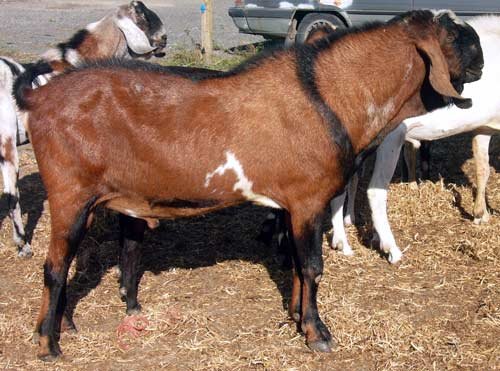Type of goat breeder - Part I
The prospect of raising goats and sheep today is enormous. Our country is a very prospect market. Many other basic needs or consumptive needs are still imported from other countries. it shows how much domestic demand still remains unfulfilled.
This condition can be an opportunity for us to open a business. One of the most prospective ventures is the cultivation of goats and sheep. Lots of types of goats and sheep that we can cultivate. Can we ascertain with the kind of output we want to get, fur, meat, skin or milk.
The price of meat that tends to rise every year becomes one of the reasons why we glance at this business. various types of imported goat can actually be developed in Indonesia. This has proven the success of several imported goat farming businesses in various regions. Before starting the business of goats and sheep we should know the types of goats and sheep that we can cultivate in Indonesia
A. Kind of Goat
Here are some types of goats that we can cultivate:
1. Goat Etawa (Jamnapari)

Goat etawa may be familiar to us. This type of goat is one type of superior goats and broiler derus from India. In Indonesia was first in the role in Kaligesing District, Purworejo District by Dutch government, so known as the race of kaligesing, then spread to various regions in Indonesia. His tall body ranges from 90-110 cm for males and 70 - 90 cm for female, and large body size ranges from 65 to 120 kg for males and 45 - 80 kg for females. The ears are long and drooping. The forehead and nose are convex. Large and long nipples. White fur color, black, yellowish brown or a combination to both. As well as on the back foot long hairy.
2. Goat Beans
Goat nuts is the original goat of Indonesia. This goat is cultivated by many people because of its high adaptation and reproduction. Classified as broiler goats. Head and small body size in the appeal of etawa goat. Ears erect. Straight, short, single white, black, brown, or a combination of all three. Has long hair on chin, neck up, shoulders, up to the butt and tail. Body weight reaches 30 kg for males and 25 kg for females. Height 60 - 65 cm for stud and 56 cm for female.

3. Etawa Peranakan Goats (PE)

Goat beans have a high adaptation to the condition in Indonesia crossed with etawa goat. Because of the result of crossing then the result is that leads to etawa and leads to the bean. But what is developed is that leads to etawa because the body is bigger and stronger than the original etawa. Black, brown, white, and red stripes. Like Etawa, this goat has a big body. Male weight can reach 90s kg, while females only 60an kg. Her ears drooping down, sagging quite large and long. The forehead and nose are convex. Male and female horned small / short. It has long feathers on the chin, the back of the thighs, and the tail. Etawa Peranakan Goat is able to produce up to three liters of milk per day as a goat etawa.
4. Jawarandu Goat (Bligon, Gumbolo, Kacukan, Koplo)

This type of goat is a cross between a PE goat and a goat nut. So it is the third derivative of etawa, smaller than etawa and tends to lead to bean goat form. Male weights are usually over 40 kg and female weights are 40 kg. Milk that produces less than the etawa goat is 1.5 liters while the original etawa can reach 3 liters. The ears are wide open, long and drooping. Both male and female are the type of broiler and milk producer.
5. Boer Goats
This type of goat is a special goat broiler with rapid growth. Because of broiler goats, weight gain ranges from 0.02 to 0.04 kg per day. Faster than other goats.
This is more influenced by the condition and the amount of milk for the seedlings and feed available. This goat is actually from south africa. The maximum weight ranges from 120 to 150 kg for males and 80 to 90 kg for females. In addition the percentage of meat in these goats ranges from 40% - 50% of body weight. Better than other goats.
Long, wide, white furry body, reddish-brown or light brown to dark brown, convex-nosed, long-eared hanging, short-legged. This goat really likes to bask in the daytime. Boer goats can survive at extreme environmental temperatures (-25 ° C - 43 ° C), shrublands, rocky slopes or in grasslands and resistant to disease. Boer goats are naturally animals that like to browse more like leaves, bushes than grass.
Tulong tarek flag droe neuh, preh preh sampek singeh, menye Hana neu indahkan neukalen efek jih.
Terima kasih